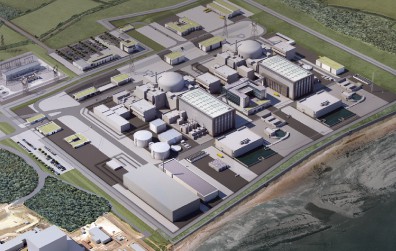How do you assess risk? If you’re an energy provider looking to build a nuclear power station you’ll likely assess risks related to planning, investment, skills, and an energy price that makes the endeavour worthwhile.
In terms of energy production and peril, an engineer will boil risk down to a single figure derived from number of deaths per kW/hr that a certain technology is responsible for.
For the general public risk is that number derived by the engineer, then multiplied by some factor which is related to the perception of risk - and that factor can be thousands of times higher that what it is to engineers.

There is also the risk that a proposed nuclear power station that has undergone extensive due diligence in the UK is hampered by the European Commission because of state aid regulations.
EDF Energy is confident that the outcomes of Electricity Market Reform, and the subsequent strike price of £92/MW for Hinkley Point C in Somerset through contracts for difference, are in line with European objectives.
Let’s hope they are, given the momentous journey the company has been on since 2007 when it first began assessing sites for new nuclear plants.
The £16bn commitment, made possible through partnerships across industry and government, will lead to two new reactors that will contribute around seven per cent of the nation’s energy.
Without wishing to state the obvious, the economic benefits will be considerable with around 5,000 to 6,000 people working on the site during construction and a further 25,000 indirectly benefitting from the project.
Once built, around 900 permanent staff will, in the words of Humphrey Cadoux-Hudson, EDF’s managing director of nuclear new build, help to provide secure, affordable and low carbon affordable electricity over its 60-year lifespan.
Furthermore, based on contract-by-contract analysis of capabilities EDF knows are in the UK, around 57 per cent of the construction value for the project will be spent with UK firms, who in turn have been encouraged to qualify as potential suppliers to Hinkley and subsequent projects both home and abroad.
EDF is committed also to investing in the skills required to build Hinkley Point C, funding the development of a new construction skills centre and spending £50m on redeveloping Cannington Court, EDF Energy’s training centre for the UK.
Households will benefit too with the department of energy and climate change estimating that the UK’s new nuclear program will save consumers £74 a year at today’s prices by 2026-30.
EDF is taking some flak right now in Suffolk where the Sizewell Parishes Liaison Group is warning of a growing feeling of resentment toward the proposed Sizewell C station.
They say: The feeling that the whole project is to be ‘imposed’ on the locality without proper influence from local people or their representatives in the District and County Councils, is rapidly increasing.’
This is a planning issue that EDF will no doubt sort out, with Cadoux-Hudson stating yesterday at WEET’s nuclear new build conference in London that the company has ‘a democratic duty to local communities…to demonstrate that everything we’re doing is to the highest quality.’
In Somerset, the company fully acknowledges the disruption as well as the opportunities and has made £100m available to local councils to help mitigate the impact of the new station during its construction period.
It’s also up to EDF to placate and educate those who rightfully raise their safety concerns about new reactor designs but maybe overestimate the risk by some orders of magnitude.
However, one of the biggest challenges – the European Commission’s state aid review - remains to be resolved.
They say: [EU] Member States are free to determine their energy mix but when public money is spent to support companies, the Commission has the duty to verify that this is done in line with the EU state aid rules which aim to preserve competition in the Single Market.
In a world of risk, one assumes EDF and DECC forsaw the challenges posed by the EC. In doing so, they will deliver what many see as the catalyst that will help boost engineering, technical skills and Britain’s manufacturing industry.




Red Bull makes hydrogen fuel cell play with AVL
Formula 1 is an anachronistic anomaly where its only cutting edge is in engine development. The rules prohibit any real innovation and there would be...